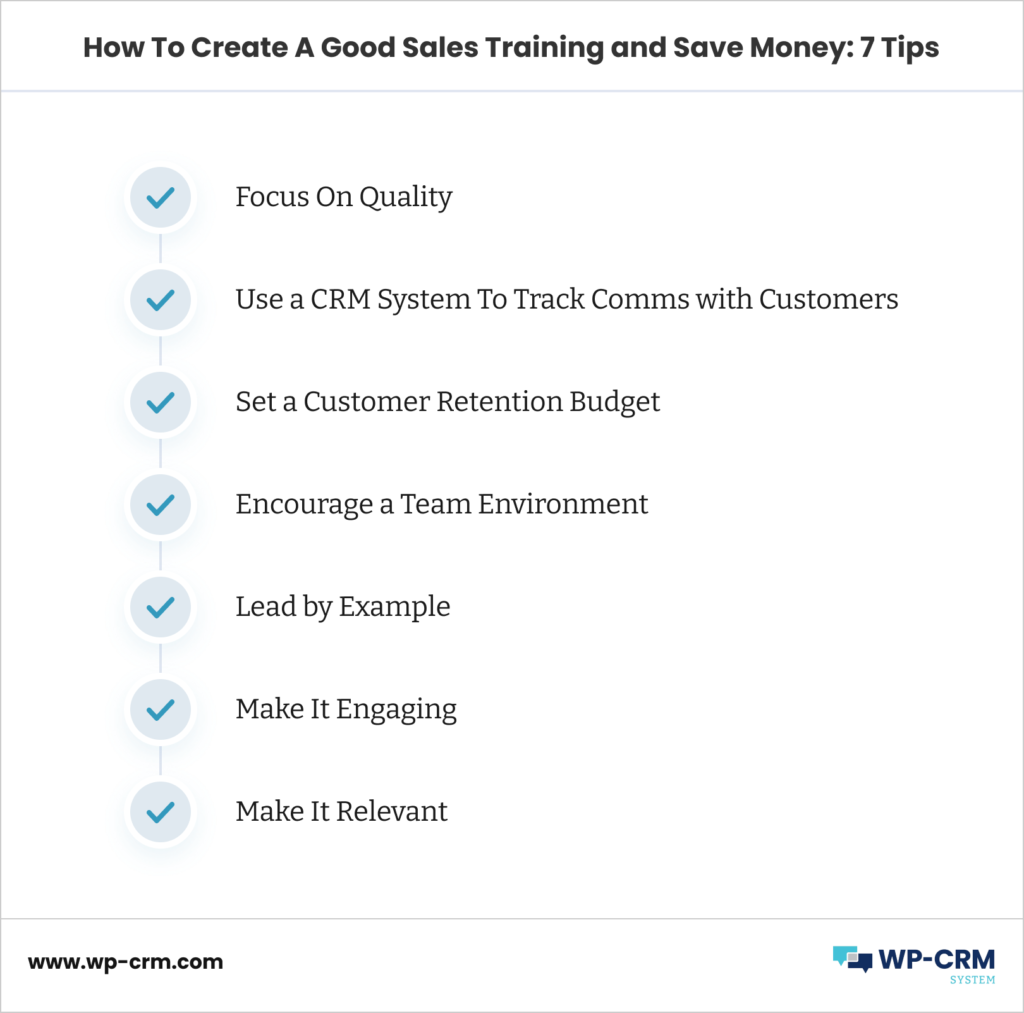How Sales Training Can Lower Customer Retention Costs
When it comes to running a successful business, it’s important to track a variety of metrics. This way, you can get a clear picture of what’s working well and where there is room for improvement. Of course, metrics like customer acquisition costs (CAC), customer lifetime value (CLV), and monthly recurring revenue (MRR) are all important to measure. However, one metric that is often overlooked is the customer retention cost (CRC).
It is essential to know how much you are spending on sales, marketing and advertising to keep customers and attract repeat business, as having a loyal customer base is crucial for any company’s success. Fortunately, calculating your CRC is relatively straightforward. Once you know your CRC, you can start implementing strategies to reduce your costs. Some effective methods for doing this include improving customer service, investing in customer retention strategies, and offering incentives for loyalty.
In short, don’t overlook the importance of customer retention costs! In this article, we will explain why customer retention cost is important, how to manage it, and how to lower it with smart sales training in your team.
Why Does Customer Retention Cost Matter, and How To Calculate It
As we mentioned earlier, customer retention cost (CRC) is a metric that is often overlooked. This is because it can be difficult to calculate, and it’s not always clear how it impacts the bottom line. However, CRC can give you insights into how much it costs to keep your customers happy and coming back.
What is Customer Retention Cost?
To calculate your customer retention cost, simply divide your total marketing, sales, and support costs by the number of customers you have in a given period. This will give you your CRC for that period. For example, if your marketing, sales, and support costs totaled $100,000 last month and you had 1,000 customers, your CRC would be $100.
It’s important to note that your customer retention cost will vary depending on the type of business you’re in and the products or services you offer. For example, subscription-based services will likely have a higher CRC than a one-time purchase product. This is because it costs more to keep a customer subscribed to your service than it does to sell them a one-off product.
That said, there are some general guidelines you can follow to get an idea of what your CRC should be. For most businesses, a good target CRC is between 10-20%. This means that for every $1 you spend on marketing and sales, you should bring in $10-$20 worth of revenue. Of course, this will vary depending on your business and products.
Why Is Calculating Customer Retention Cost Important?

Now that we’ve answered the question “what is customer retention cost,” let’s take a look at why it matters.
1. It helps you understand the true cost of acquiring and keeping customers.
Many businesses focus on customer acquisition costs (CAC) when trying to understand the costs of their sales and marketing efforts. However, CAC only tells half the story. To really understand your costs, you need to take customer retention into account.
This is because it costs more to acquire a new customer than it does to keep an existing one. In fact, some estimates suggest that it can cost up to 7 times more to acquire a new customer than it does to keep an existing one. This means that even if your CAC is low, you could still be losing money if your CRC is high.
2. CRC is a key metric for understanding your customer lifetime value (CLV).
Customer lifetime value (CLV) is the total amount of revenue that a customer will generate over the course of their relationship with your business. To calculate CLV, you need to take into account both the revenue from initial purchases and the revenue from repeat business.
This is where CRC comes in. By understanding your CRC, you can get a better sense of how much it costs to keep a customer over their lifetime. This, in turn, will help you fine-tune your CLV calculation and make sure that you’re accurately predicting the revenue you’ll generate from each customer.
3. It can help you identify areas where you’re leaking money and need to make improvements.
If your CRC is high, it’s a sign that you’re losing money somewhere in your customer retention process. This could be due to ineffective marketing, poor sales strategies, or inadequate customer support.
Identifying and addressing these problems is essential if you want to reduce your CRC and improve your bottom line. Fortunately, measuring and tracking your CRC can make this process much easier. By tracking the ROI of your retention efforts, you can identify which strategies are working best and focus your resources on those areas.
4. It allows you to track the ROI of your retention efforts.
Finally, CRC is important because it allows you to track the ROI of your retention efforts. This is essential for making sure that your retention strategies are actually paying off. If you’re not tracking your CRC, you could be wasting time and money on retention strategies that don’t work.
How To Create A Good Sales Training and Save Money: 7 Tips
With the right training, your sales team can lower customer retention costs and create loyal and returning customers successfully. Here are three tips on how to create good sales training in your team:

Focus On Quality
Highlight the importance of keeping CRC low while striving to deliver high-quality service. Being knowledgeable about your products and tailoring your strategy to each individual’s needs is more likely to keep customers with your business for longer as opposed to quick, generic, impersonal service.
Use a CRM System To Track Comms with Customers
Encourage your sales team to use a CRM system so that they can track all communications with customers. This way, you can identify any areas in which your team could improve their service and make changes accordingly. Additionally, using a CRM system will help your sales reps keep organized and focus on the customer’s individual needs more.
Set a Customer Retention Budget
One of the best ways to save money is by setting a customer retention budget. This way, you can track your expenditures and ensure that you’re allocating enough resources toward keeping your customers satisfied. Additionally, this will help your sales team make informed decisions about where to allocate your resources in order to achieve the greatest return on investment. Although there may be some wriggle room depending on the client and the size of the product, make sure your budget guidelines are clearly defined and that keeping extra spending “on the low” is a priority.
Encourage a Team Environment
Customer retention is important for every business, so it should be a team effort. Encourage your sales reps to work together to brainstorm ideas on how to improve customer service and keep customers happy keeping your budget in mind. Additionally, make sure that your sales reps know that they can come to you with any questions or concerns they have about customer service.
Lead by Example

As the leader of your sales team, it’s important to set the tone for impeccable customer service. Be sure to lead by example and always provide high-quality service to your customers. Invite team members to attend your sales calls and meetings. Additionally, take the time to listen to your sales reps’ concerns and give them feedback on their performance. By doing so, you’ll create a sales team that’s focused on providing the best possible service to their customers.
Make It Engaging
In order for sales training to be effective, it must be engaging. Boring sales training will only lead to poor attendance and even lower motivation levels. Make sure to include a mix of activities, such as role-playing exercises, case studies, and group work. This will help keep your team members engaged and interested in what they’re learning.
Make It Relevant
Your sales team should be able to see how the training is relevant to their daily tasks. If they can’t, then they’re likely to tune out and not retain any of the information. Make sure to give examples that are specific to your industry and address common sales challenges that your team faces. Depending on the size of your team, you can chat with each of your employees (or at least with a few at a time) so you can demonstrate how they can tweak their sales strategy according to the specifics of their role and the client at hand.
Wrapping Up
Sales training is one of the most important investments a company can make. Not only does it help to lower customer retention costs, but it also helps to create a more efficient and effective sales team. By following these tips, you can create a sales training program that not only saves you money but also engages your employees and drives results.
